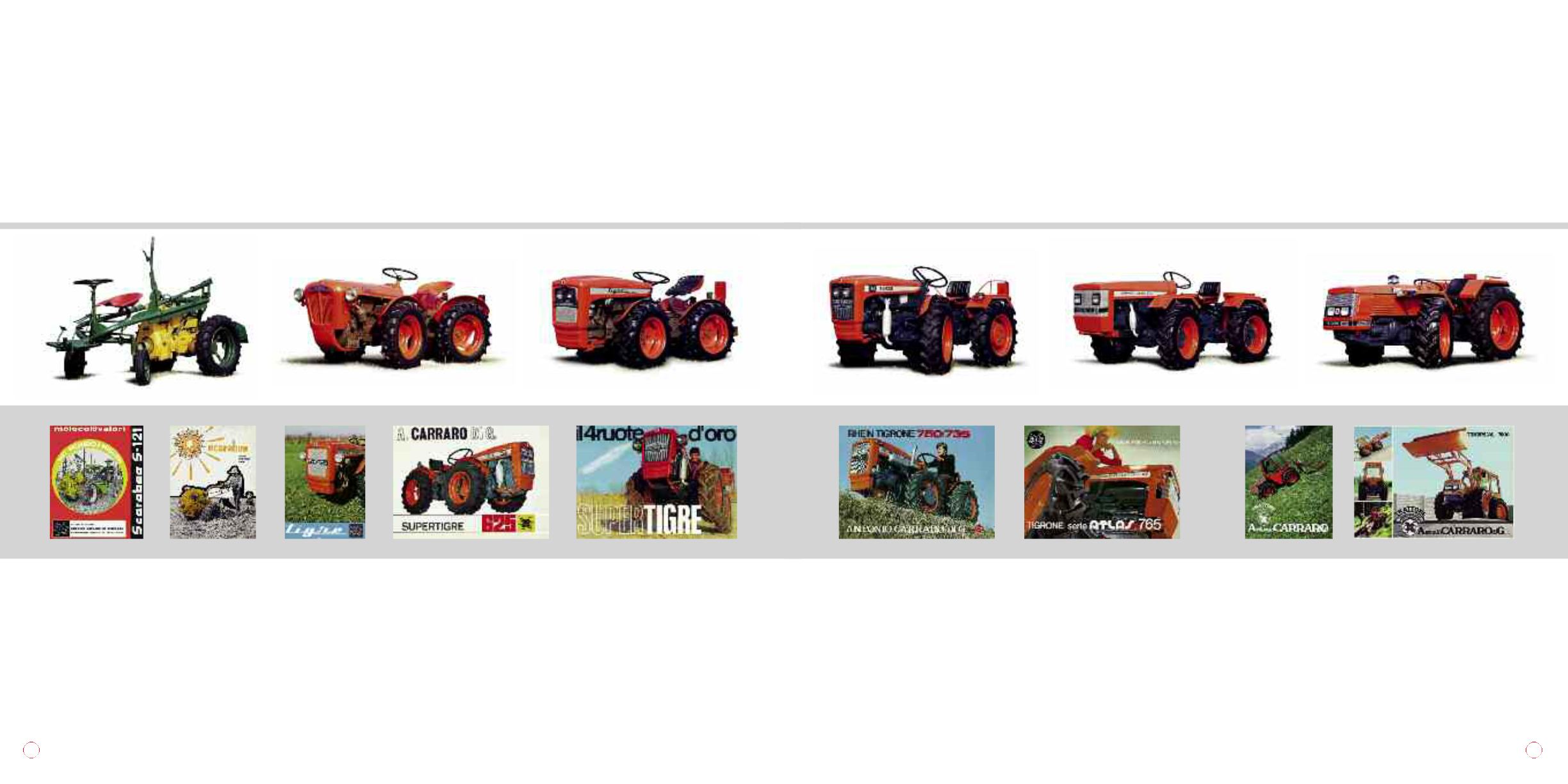
11
12
1911:
In Italy the primary
school comes under state control
and the right to vote is extended
to all literate, male citizens
above the age of 30.
In the same year, Italian
emigration reaches a peak of
6,000,000 people.
1913:
In the USA Ford
introduces the world’s first
assembly line, in accordance
with the rationalisation of the
productivity cycle theory
proposed by F.W. Taylor.
1925:
The “Grain war” favours
the extension of Italian
cultivated surface area, with a
subsequent increase in the
demand for sowers.
1929:
An excess in production
results in “Black Thursday” on
Wall Street and triggers a deep,
world, economic crisis.
1934-35:
The American
economy’s recovery process
(“New Deal”) boosts agriculture.
1946:
In the Soviet Union the
fourth “five-year plan” for
National reconstruction is put
into place.
1947:
With the Marshall Plan,
the USA holds up the Western
European economy.
1948:
The first European
economic co-ordination body is
set up.
1951:
The European coal and
steel community is set up in
Paris.
1957:
The European Economic
Community (EEC) is set up with
the Treaty of Rome.
1959:
Texas Instruments make
the first integrated circuit,
forerunner of the modern day
microchip. IBM produces the
first computer.
1965:
The first tele-
communication satellite goes
into orbit.
1969:
Italian Gross Domestic
Product is ranked in 6th position
in the world.
1973:
Employment in
agriculture is 23% of the Italian
population.
1979:
The European Monetary
System is put into place in the
countries belonging to the EEC,
which is the first stage towards
the single currency.
1982:
The International
conference “Environment 82”
underlines the dangers of acid
rain. In the USA the first
genetically modified animal is
bred.
1985:
English researchers
discover a thinning of the ozone
layer above Antarctica.
1987:
After the Schengen
agreement (1985) the Single
European Act comes into power
with the goal of moving from
free exchange within to the
complete unification of all EEC
countries.
1989:
On the 9
th
of November
the Berlin Wall, symbol of the
political division in Europe,
comes down along with the
entire world’s ideologic.
1992:
The Maastricht Treaty
establishes the European Union,
which provides for the setting up
of monetary-economic-political
unification along with a joint
defence policy amongst EEC
countries.
The Rio de Janeiro summit drew
up a programme for the defence
of the environment.
1995:
Connections to the
Internet throughout the world
reach three million and increase
by 50% each year.
2000:
The Euro, the single
European Currency is produced.
The massive diffusion of Internet
brings about new ways of
communication, working and
buying on a world level.
1910
At just 19 years of age Giovanni
Carraro, founder of the company,
presents a multifunctional
machine capable of ploughing,
milling, sowing, harrowing and
rolling simultaneously to the 1st
Padova Industrial Exhibition.
1920-40
From horse to HP, from small
business to mechanical
company, the company’s
evolution proceeds along parallel
lines with the progressive
modernisation of Italian
agriculture.
It is the period of the “Grain
War” and the market is
demanding new machines.
Giovanni Carraro’s sowers play a
leading role in the expansion of
cereal crops.
1950
The first multifunctional,
implement carrying tractor with
the “Giovanni Carraro” logo on is
produced and is called
“Universal”.This style of tractor
has characterised the company’s
history and philosophy.
1960
Antonio Carraro, following in his
father’s footsteps, founds
“Antonio CARRARO di
Giovanni”. The company’s most
important product is the
“Scarabeo” (a symbol of rebirth
and strength).
It is a new style of motor
cultivator that is refined, elegant
and comfortable.
1963
A project is drawn up for a very
special tractor with new
characteristics: articulated with
specific power of 20 HP. With
the name “Tigre” a line of
tractors from glorious stock
takes on the European market
for specialised agriculture.
1970
Antonio Carraro designs and
builds the CSR (Centre for Study
and Research): an avant guard
R&D laboratory, which soon
becomes the principle “engine”
for the company’s ideas and
products. The first reversible
tractors come out.
1980
Production leans towards
diversification: from specialised
agriculture to the most diverse
applications in the “Civil
Sector”. Antonio CARRARO
enters the maintenance sector
which encompasses green areas,
roadways, urban cleaning,
building sites and sports
complexes.
1990
Research is focussed on design
and ergonomics. It couldn’t fail
to be otherwise, Antonio
Carraro’s exclusive feature
known as ACTIO™ i.e. full
chassis with oscillation, that
determines its tractors’ unique
advantage and comfort, is
developed.
2000
Antonio Carraro’s entire pro-
duction, commercial and service
structure takes on a global
reorganisation process, with the
consultancy of International
experts (Porsche Consulting).
The company’s leading product
is represented by the Ergit
Series, which is characterised by
highly technological tractors with
specific powers of up to 100 HP.
The Stages of Evolution.
Expansion within a Context.


